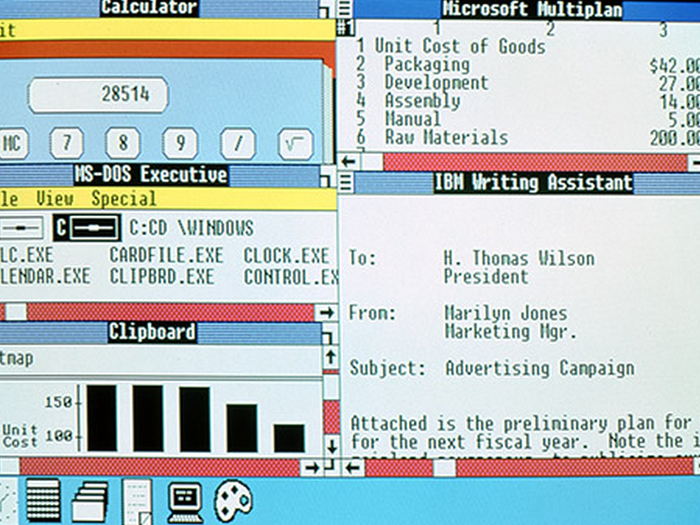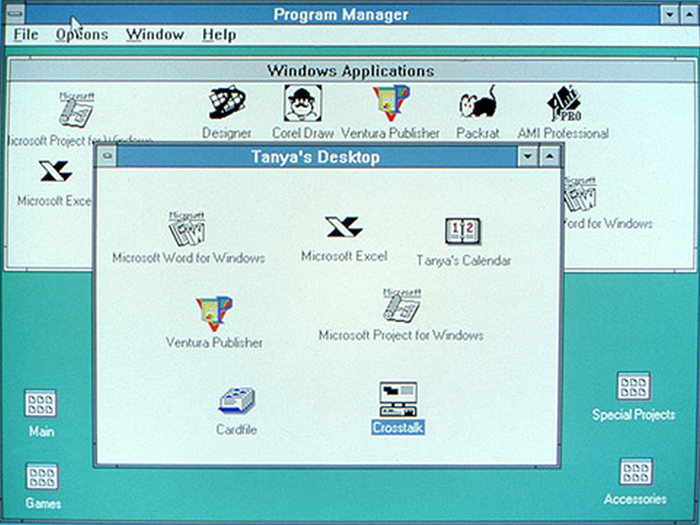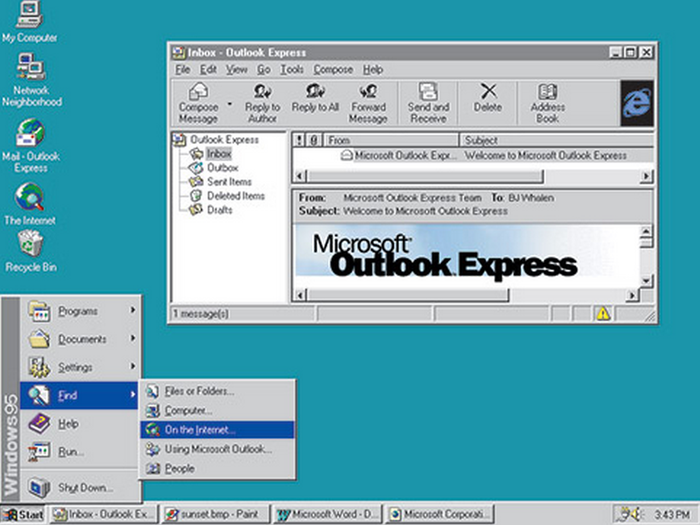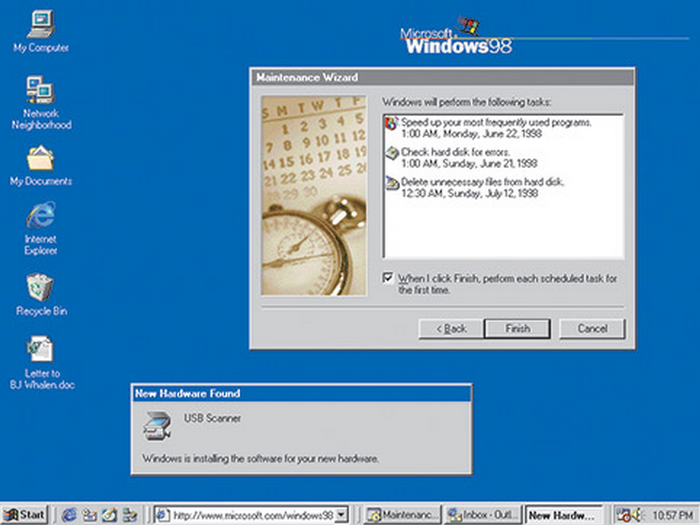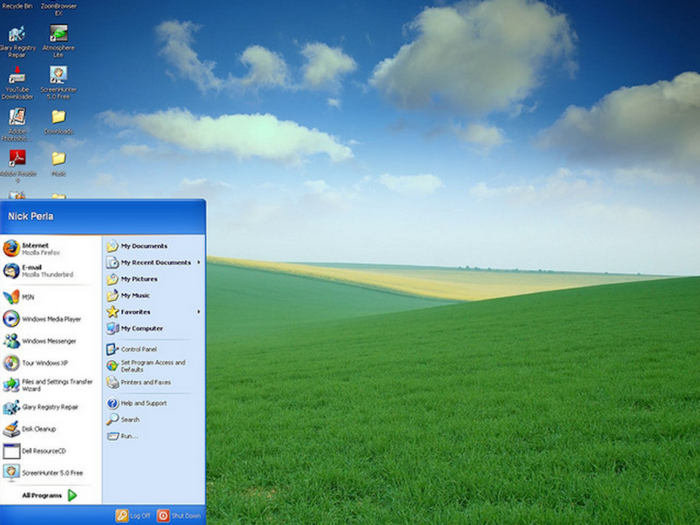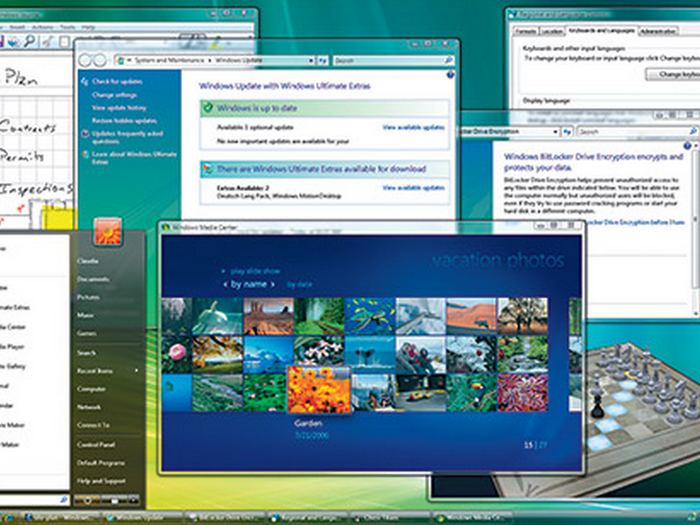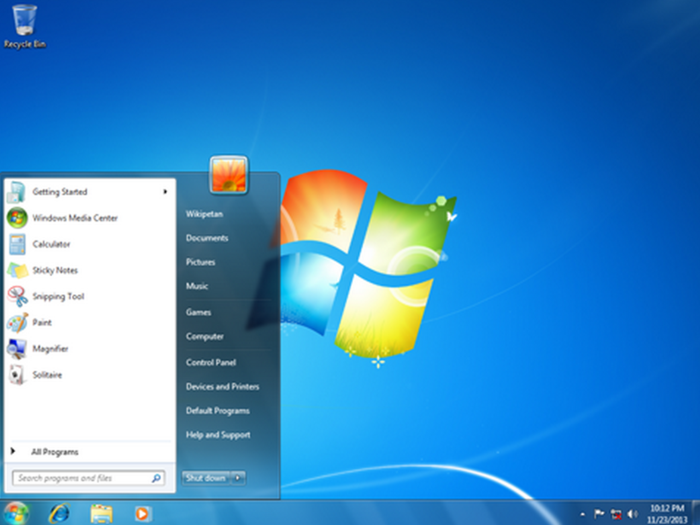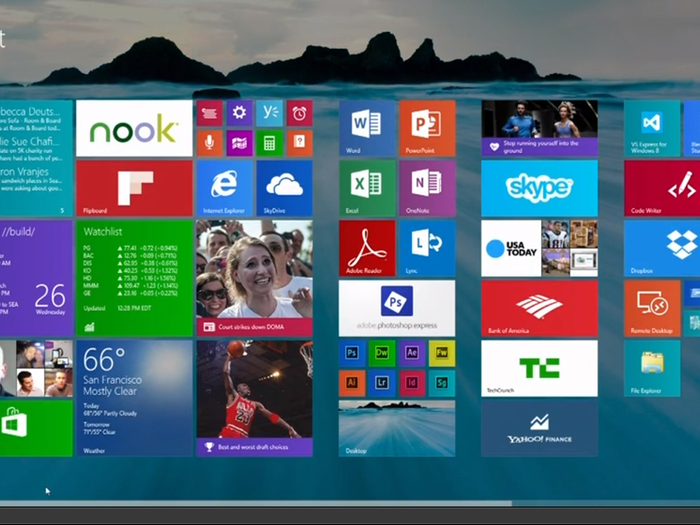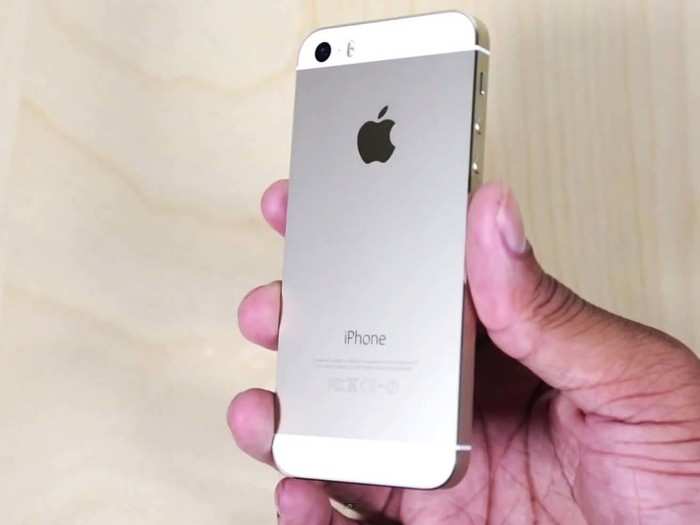Windows 2.0 (1987-1990)
The second iteration of Windows launched in 1987, and introduced desktop icons, expanded memory, and the ability to overlap windows.
Windows 3.0 (1990)
When Windows 3.0 debuted in 1990, it became the most widely used version of the software yet. Microsoft sold 10 million copies of Windows 3 in its first two weeks. With Windows 3.0, Microsoft significantly enhanced the software's performance, improved app icons, and added 16 new colors to its graphics.
Windows 95 (1995)
Windows 95 was one of Microsoft's most prominent software releases to date. The iconic Start button made its debut on Windows 95, as did Internet Explorer. Microsoft sold 7 million copies within its first five weeks of availability.
Windows 98 (1998)
Windows 98 was released as the age of the internet was in full swing. Microsoft describes it as the first real software release for consumers. The ability to read DVDs and the Quick Launch menu were among Windows 98's new features.
Windows ME (2000)
With Windows ME, or Millennium Edition, Microsoft added new media-focused features such as Windows Movie Maker. It was also the first version of Windows to support System Restore, which allows you to reset your system's preferences to before a certain date. Windows ME faced some harsh criticisms when it hit the market, however. PCWorld listed it in their list of the Worst Tech Products of All Time countdown, and ABC's review criticized it for being difficult to install.
Windows XP (2001-2005)
Windows XP was praised for its cleaner aesthetics and smooth performance. "You'll hear few complaints about the operating system itself, especially when it's compared with previous versions," David Pogue wrote in The New York Times' review back in 2001. "No matter what you think of Microsoft, using Windows XP on a new or very recent PC feels sure, swift and satisfying. And that's a big deal." Microsoft also says that it emphasized security with Windows XP.
Windows Vista (2006-2008)
Windows Vista introduced a new design and some minor updates to existing Windows programs, but it was ultimately met with criticism. Many reviews concluded that there was no compelling reason to upgrade from XP.
Windows 7 (2009)
Windows 7 was recieved with praise when it launched in 2009. CNET called it "what Vista should have been." It's still used across corporate environments today.
Windows 8/8.1 (2012-present)
Windows 8 is Microsoft's most recent version of Windows. Microsoft completely changed the user interface of Windows 8 from the traditional desktop to a tiled, touch-friendly design. The goal was to optimize the OS for tablets, but Windows 8 has seen lukewarm reception at best. The software has been criticized for its complicated interface and lack of a Start menu, which Microsoft is rumored to bring back with Windows 9.

